Beijing's Forbidden City
The Forbidden City, also referred to as the Imperial Palace, covers an area of over 1 million square meters in downtown Beijing.
It's surrounded by a moat that's over 150 feet across and about 18 feet deep. Here's the view of the southeast corner tower as we approach from outside.
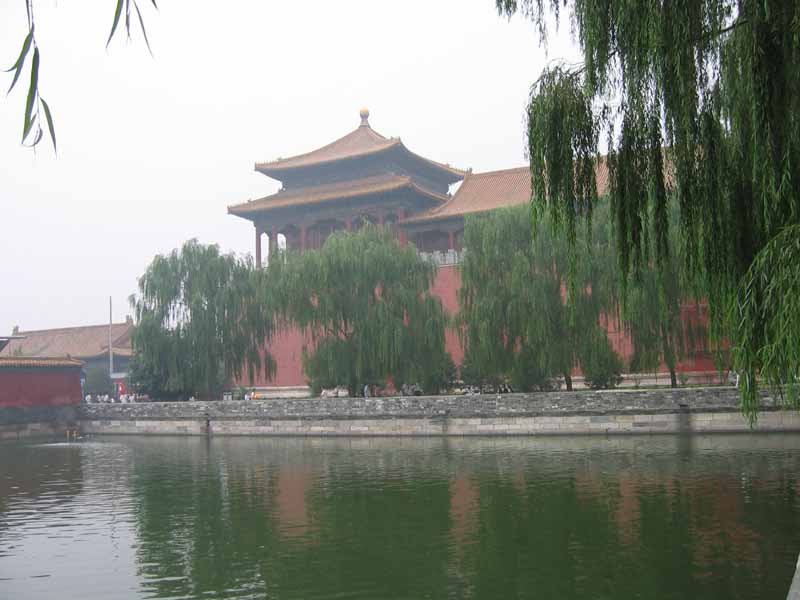
We wandered around outside the Forbidden City for a few minutes
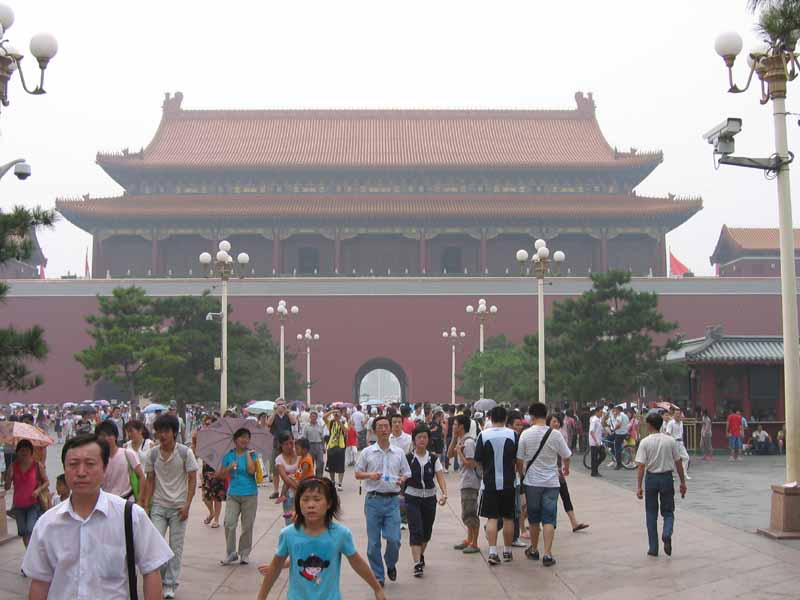
not really sure which way was which, and saw this collection of old cannons
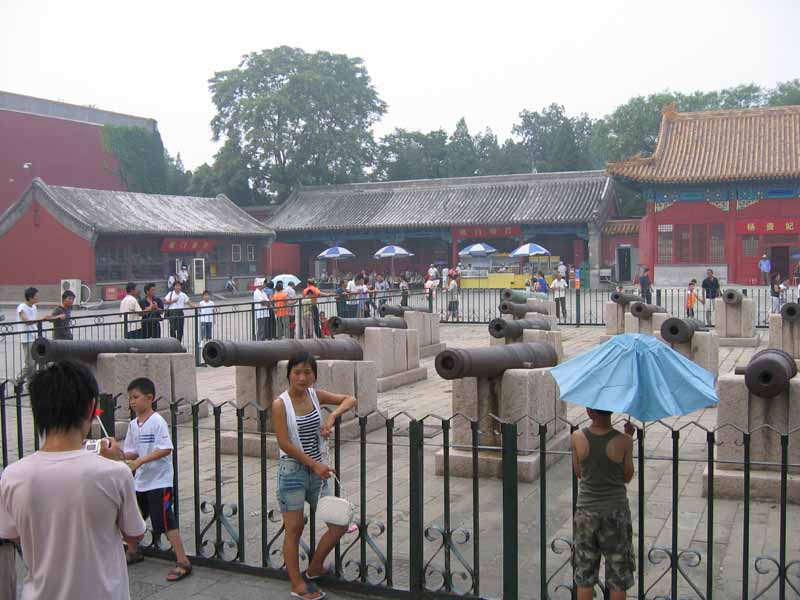
before meeting up with a local guide, purchasing tickets (60 Yuan, or about $9)
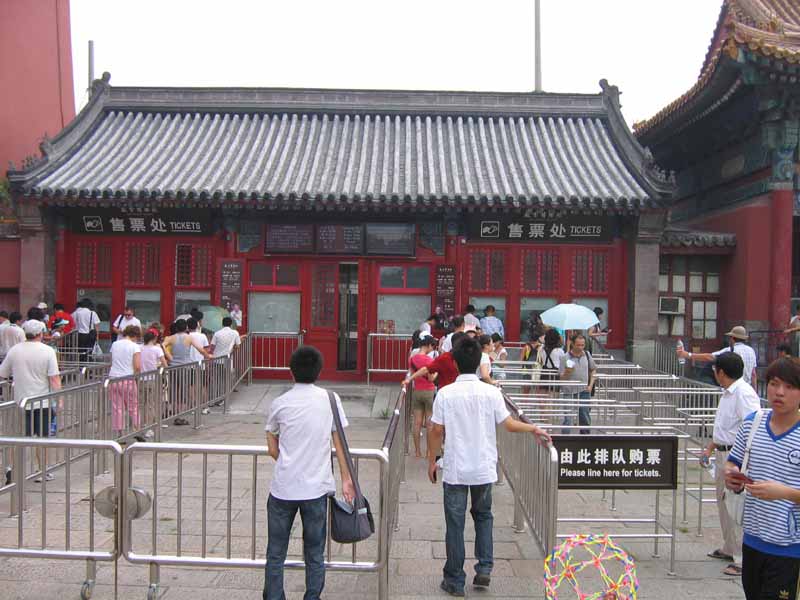
and entering the City through the Meridian Gate, below.
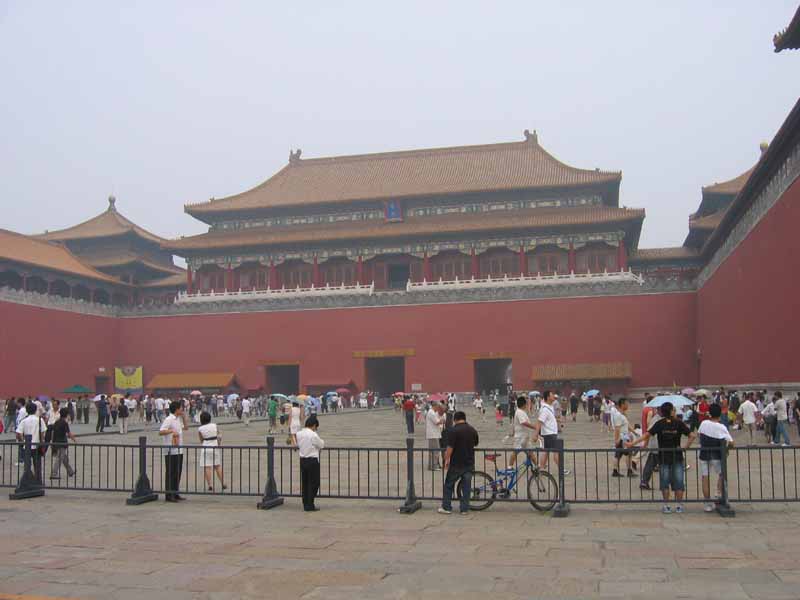
The entire Forbidden City was built between 1406 and 1420, by a million workers, and was the ritual center of two dyanasties, the Ming (1368-1644) and Qing (1644-1911).
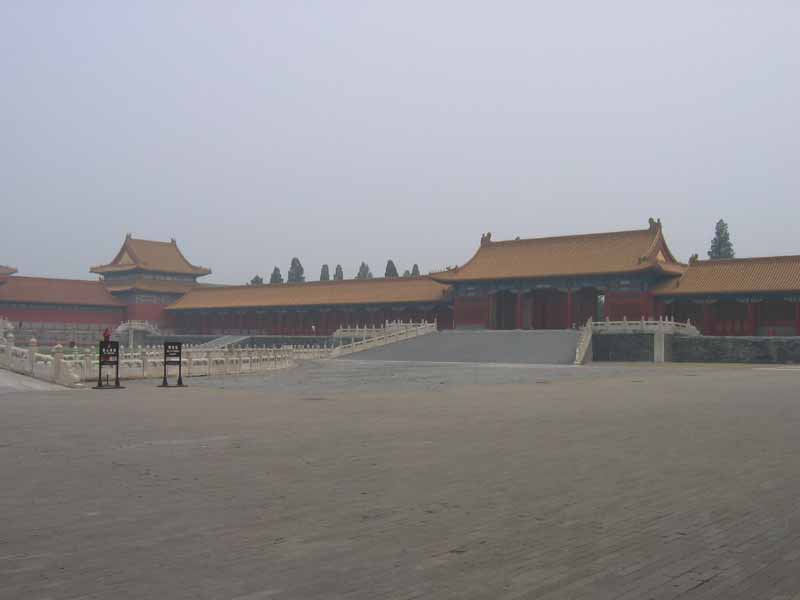
Above & below, part of the courtyard just inside the Meridian gate
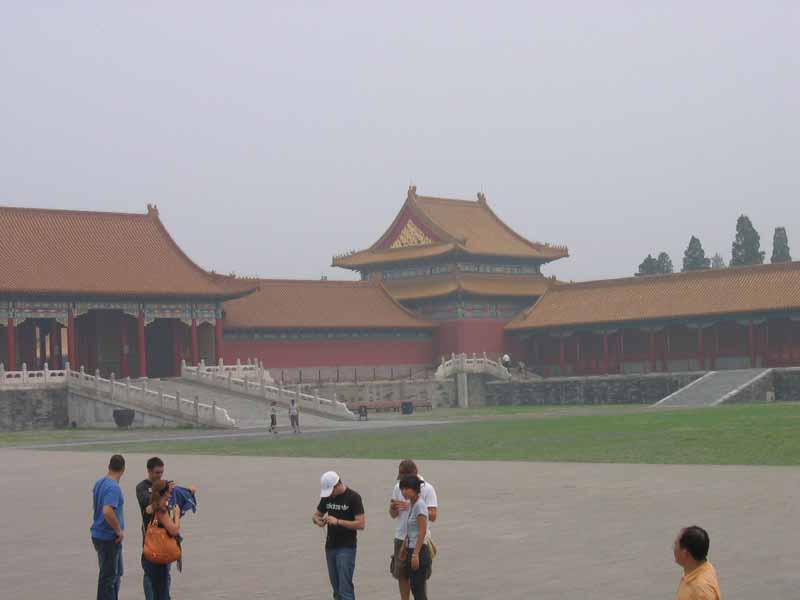
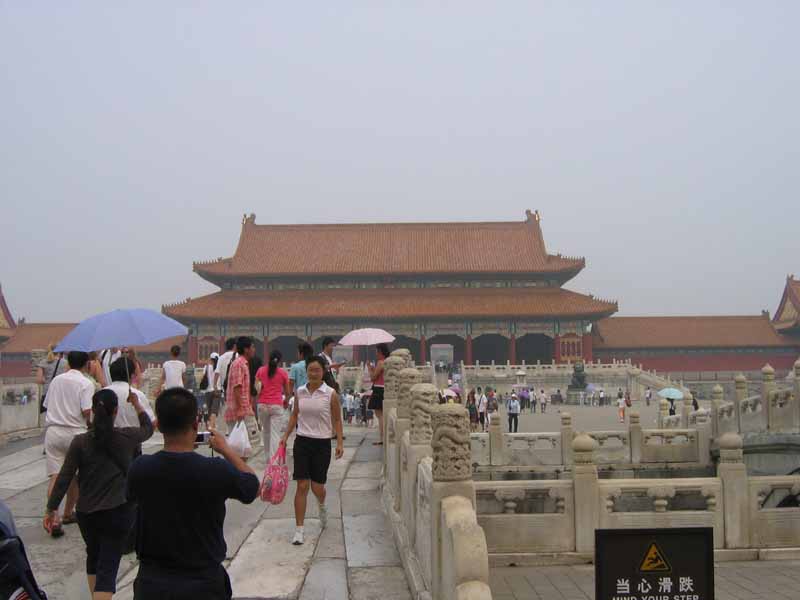
The public was never allowed into the Forbidden City until 1914, when the Outer Court, the part we'll walk through first, was opened.
Beyond the bridges, the Gate of Supreme Harmony.
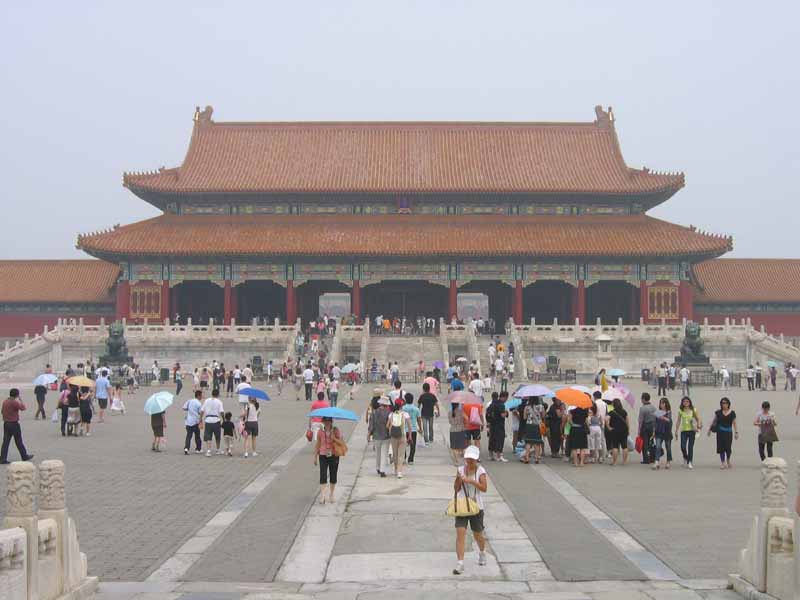
The stones in the center of the walk here are raised, and were used by the Emperor, allowing him to walk above the height of those who surrounded him.
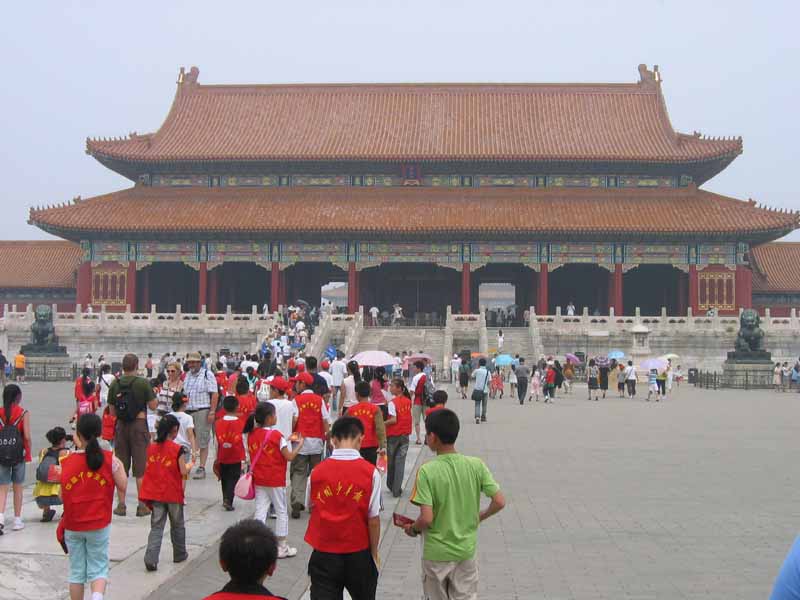
This bronze lion is one of two guarding either side of the stairs up to the Gate of Supreme Harmony. Can you tell if this is the male or the female lion?
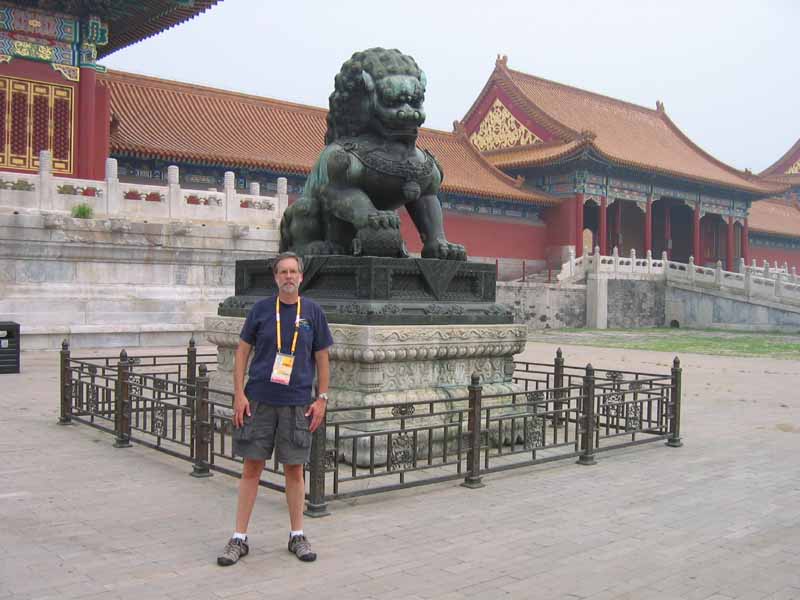
I'll answer that question soon, but here's a look at some of the detail in the ceiling of this Gate.
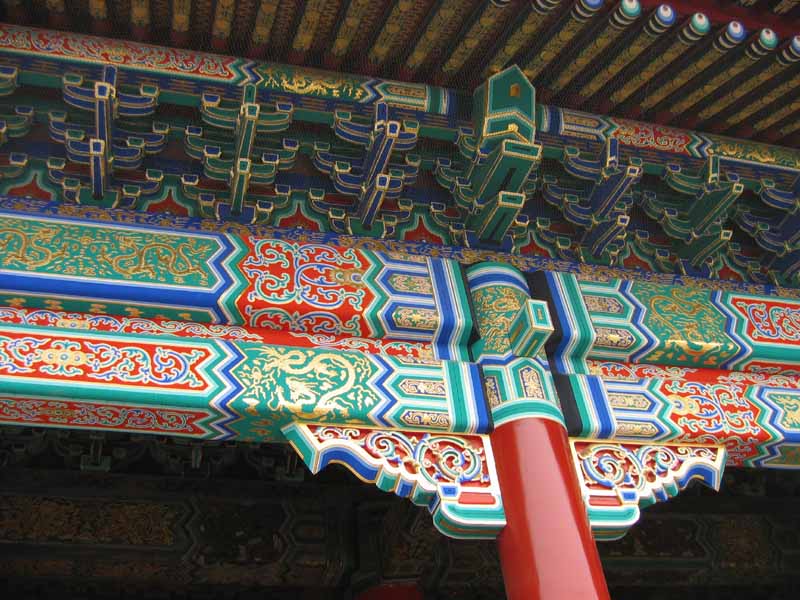
And a look back, before going through the Gate of Supreme Harmony, at the Meridian Gate, beyond the five bridges.
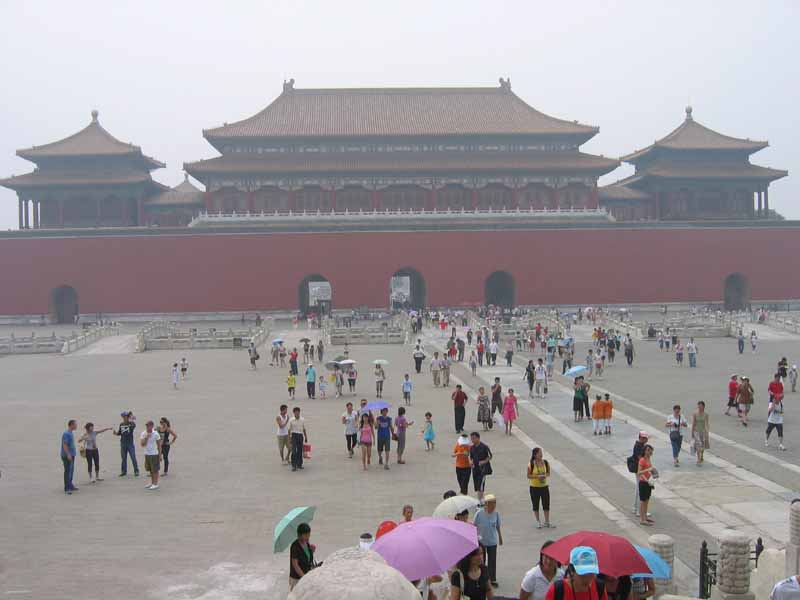
Going through the Gate, this sign explains the Forbidden City and shows its layout.
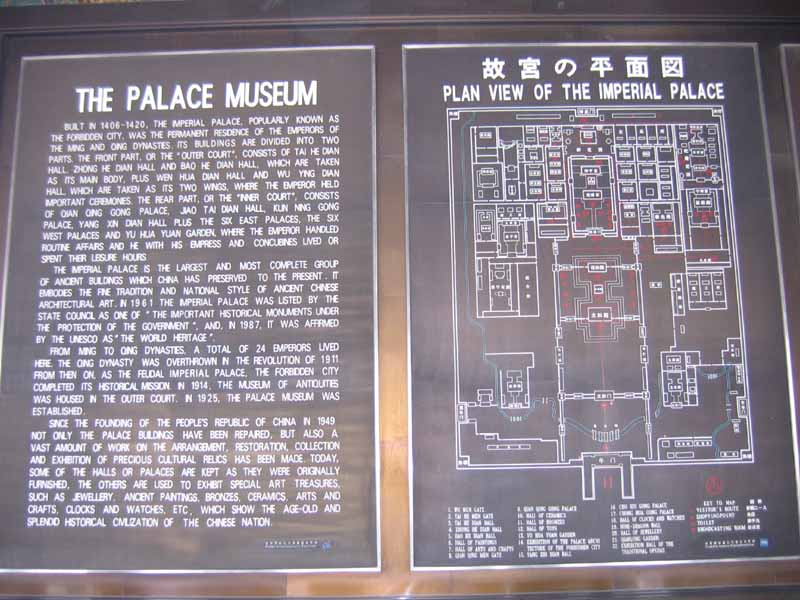
After going through one of the gates, there's another large square, beyond which sits the Hall of Supreme Harmony, the largest of all the buildings here, and the largest surviving wooden structure in China.
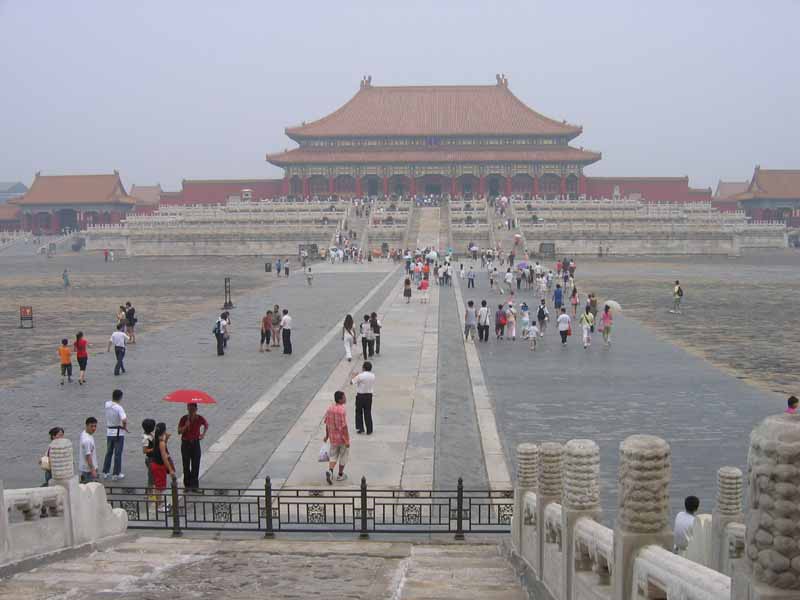
On the east side of the square sits this building, the Pavillion of Embodying Benevolence. Everything here is symetrical, so an identical building rests on the west side of the square.
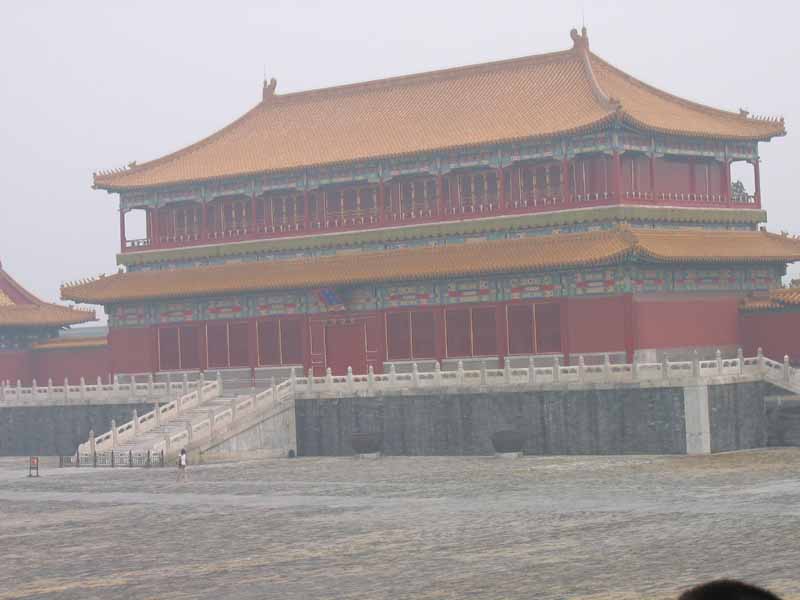
Looking back again at the Gate of Supreme Harmony, you can see the red doors with the nine rows of nine golden door nails. Lots of red here in the Imperial Palace, because red symbolizes wealth.
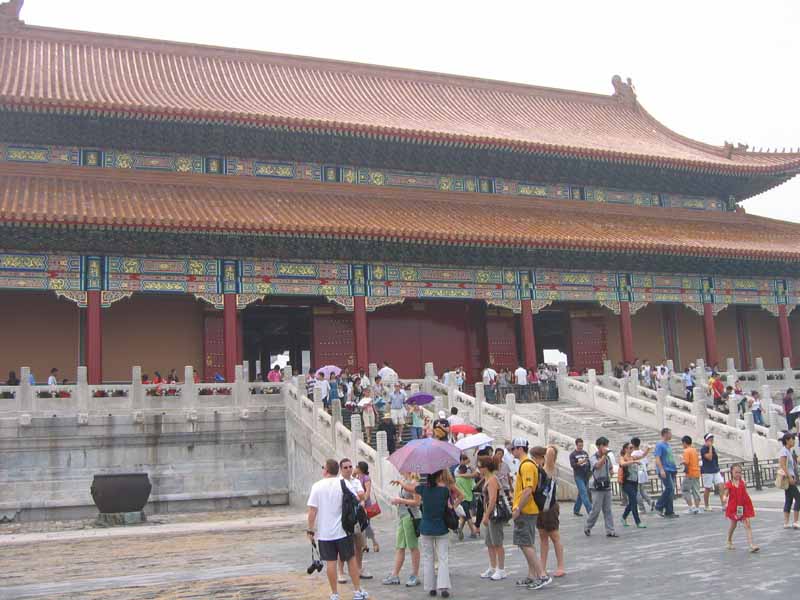
Continuing towards the Hall of Supreme Harmony, there are lots of steps to climb. The Hall rises 30 meters or about 100 feet above the surrounding square. The stones on the walkway have been replaced as part of a restoration project. The bumpy ones off on the sides are original, and are the top layer of many, going down many feet. The idea was to prevent anyone from tunnelling into the Forbidden City.
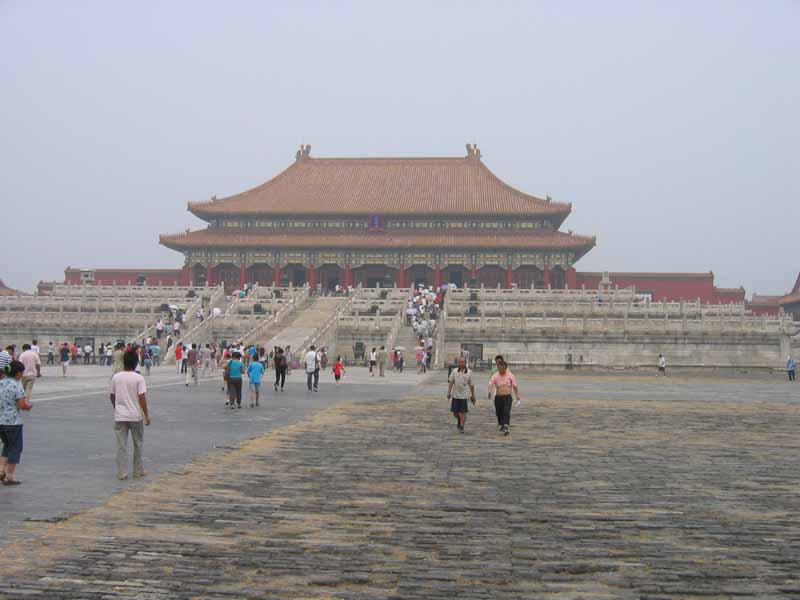
At the top of the stairs, this is one of several large incense burners, each about 5 feet high. These aren't used today except for special occasions, but there are lots of them in the Palace.
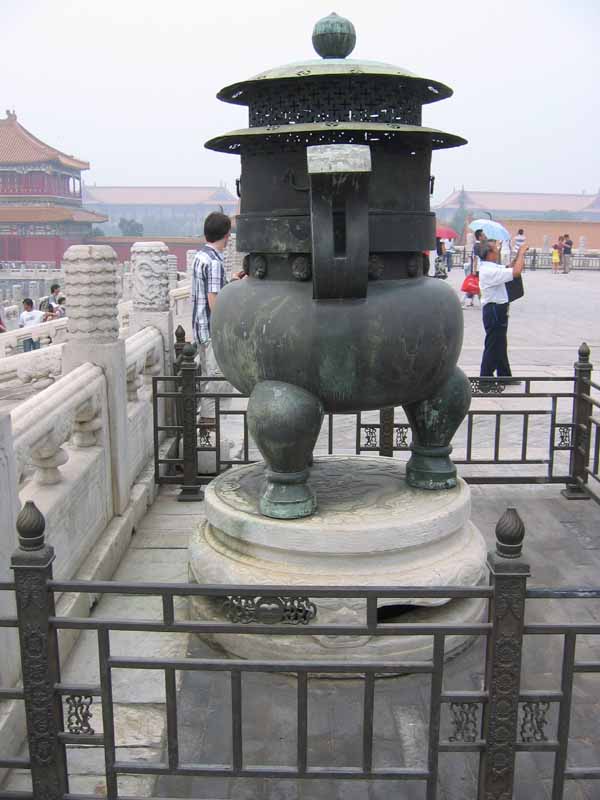
In the Ming Dynasty, the Emperor held court here to discuss affairs of state. You can see the throne, more incense burners, bronze storks, & oriental (of course!) rugs.
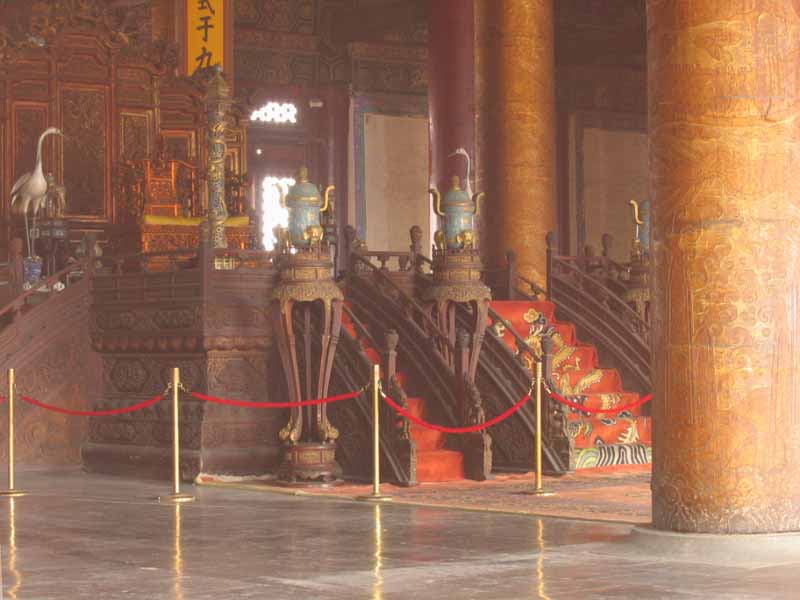
This 2-ton bronze pot outside of the Hall held water, in case of fire.
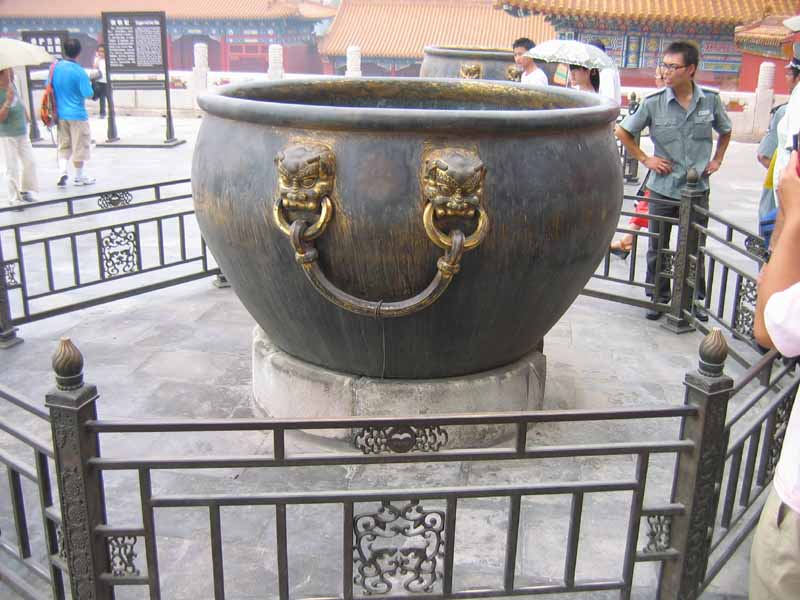
The ornamental animals on the roof of the Hall are there to prevent fire (notice the dragon decorations, too)
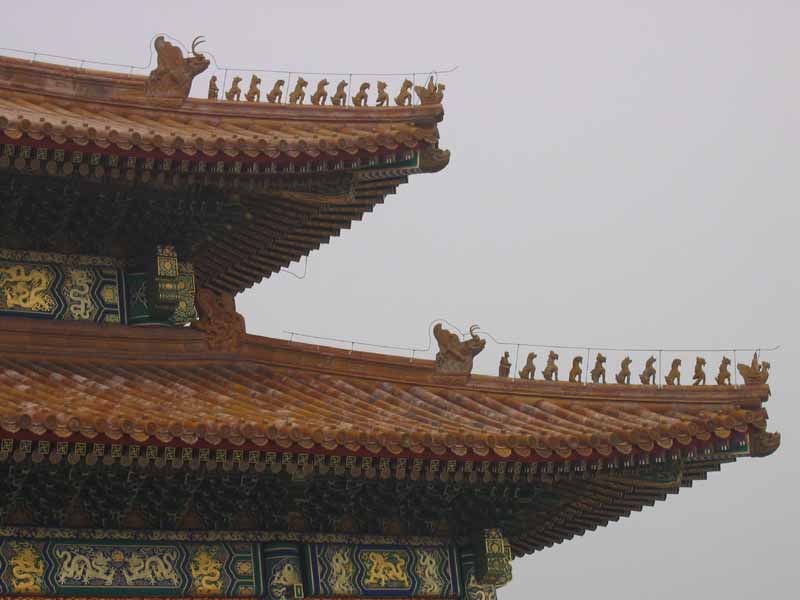
but when you've got a wooden building lit by candles, and frequent fireworks, accidents happen. The Hall was damaged 7 times by fires, and was last rebuilt from 1695-1697.
There's more on the next page.
©2002-2008 Jeff Baker.us All Rights Reserved.